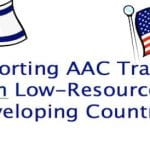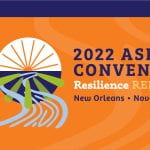Social media use has become a conventional form of communication. Yet recognition of the value of social media (and other electronic modalities) for individuals who use AAC has not been fully translated into practice. As with her ASHA 2016 poster session, Dr. Caron’s article builds on how the proposed framework can assist in clinical practice and future research directions.
Playing the Long Game: Considering the Future of AAC Research and Service — Publication
“In the case of forecasting the future of AAC systems and services, the largest risk is not that predictions do not come true, but that the science and the application do not advance.”
Providing instructional support for AAC service delivery in low- and middle-income (LAMI) countries: Muttiah, McNaughton, & Drager (2015)
This study investigated the experiences of eight augmentative and alternative communication (AAC) professionals who had provided instructional support for AAC service delivery in low- and middle-income (LAMI) countries.
“My world has expanded even though I'm stuck at home”: Experiences of individuals with Amyotrophic Lateral Sclerosis who use Augmentative and Alternative Communication and social media: Caron & Light (2015)
This study aimed to expand the current understanding of how persons with amyotrophic lateral sclerosis (pALS) use augmentative and alternative communication and social media to address their communication needs.
Preparing teachers for collaborative communication: Vostal et al (2015)
The successful inclusion of students with disabilities in general education classrooms requires a new emphasis on collaboration between teachers.
- « Previous Page
- 1
- …
- 6
- 7
- 8
- 9
- 10
- …
- 13
- Next Page »






